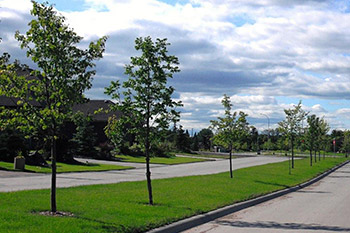
 The Beginning
The Beginning
In 1825, St. Paul's Church was built on the west side of the Red River at a location midway between St. John's in Winnipeg and St. Andrew's in Lockport. The community was therefore known as Middlechurch. The parish encompassed both the west and the east sides of the Red River and on Sundays, parishioners on the east side of the river would ferry over for services at St. Paul's.
RM of St. Paul
In 1880, the Rural Municipality of St. Paul was established with offices on the west side of the river. Residents on the east side had to go to the west side for any municipal business. As the population on the east side increased, so did the desire to have their own municipal services and in 1916 the Rural Municipality of East St. Paul was incorporated.
First Politicians
The first Mayor was A. Sperring and East St. Paul was divided into four wards, as it is today, only the boundaries of the wards have changed slightly over the years. The first Secretary-Treasurer, W. Gorham, served for thirty-three years, holding every council meeting during his term in his own home.
Highlights
East St. Paul has always been a very diverse and lively community:
- In the 1920s, a very popular dance hall was built on the property presently owned by Imperial Oil. The S.S.Kenora would transport passengers up and down the Red River, bringing them for an evening of dancing and socializing.
- Fox and mink farms were very prosperous.
- In 1882, the Canadian Pacific Railway's main line came right through the town site to facilitate the transportation of gravel, still one of the major industries in East St. Paul to the present time. The gravel was known as "Bird's Hill Gold" and the pits provided a place of recreation as many swimmers used the clean, cool water for swimming. Homes built in the Silver Fox Estates now circle part of one of the oldest pits.
- Agriculture and market gardening have always been a mainstay of the community. During the late thirties, in the "Pea Viner" Plantation on the corner of Hoddinott and Gateway, peas were shelled and then shipped to East Kildonan for processing.
- In 1951, Imperial Oil shipped crude oil by pipeline to be refined in its East St. Paul plant. In 1975, the plant ceased refining operations but retained its storage facilities.
- Hot Dog and Chip stands are still one of the lures for City folks on a Sunday drive, with one of the first ones being operated by Nick Rebeck in the late 1940s at the corner of Hoddinott and Bird's Hill Roads.
- When the Floodway was built in 1967, Highway 59 was rerouted so that it bypassed the Village and business gradually slowed down. However, as the community continues to grow, so does the business community with professional and consumer services, grocery stores, a post office, eateries, automotive services and contractors, banking facilities, insurance agency, catering and gift shops all available within the community.
